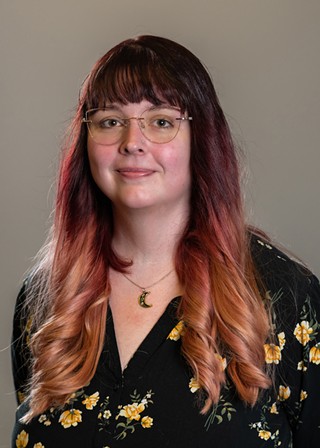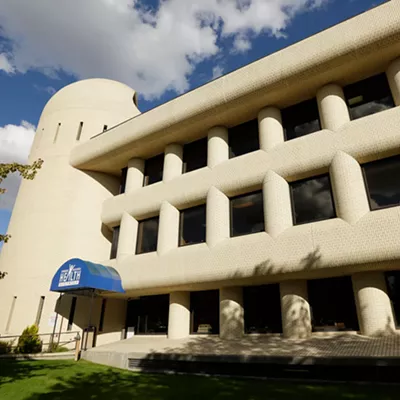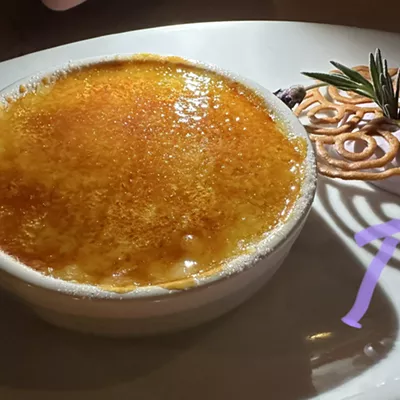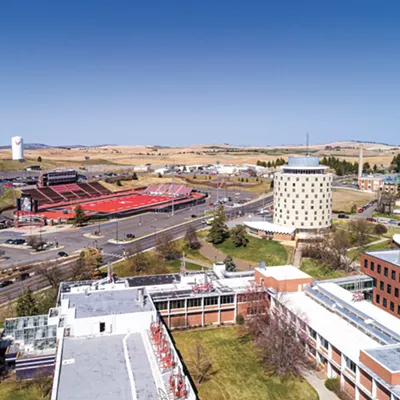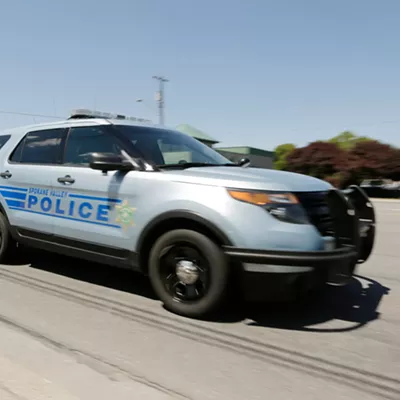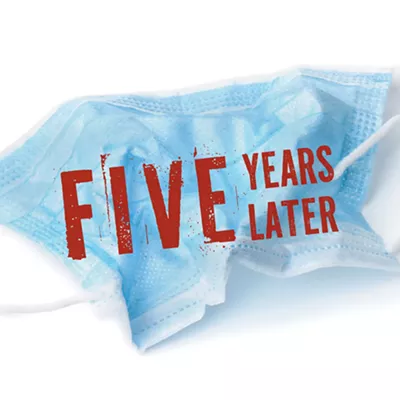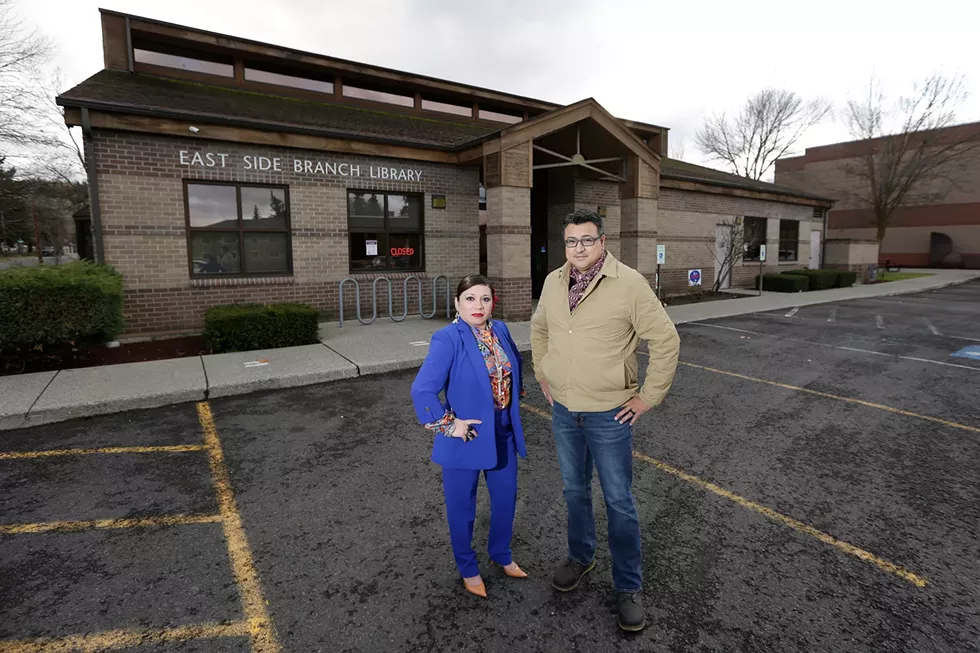
Late this year, East Central welcomed the city's first new library space paid for with a 2018 levy.
Not only did the neighborhood gain the new space, but it also saw an opportunity open up for the old East Side Library, which shares a parking lot with the Martin Luther King Jr. Community Center just off South Stone Street and East Sixth Avenue.
While ideas for the old library space were first floated a few years ago, the neighborhood is now heading into a full outreach process to figure out the best ways to grow a sense of community in that space while addressing safety concerns in the area.
So far, two major proposals for very different uses have been considered: a multicultural community center focused on bringing different immigrant communities together, or a police precinct/community policing office that would increase the visibility of law enforcement in a neighborhood that has struggled in recent years. East Central has seen at least two deadly shootings in the last year, and it has one of the highest crime rates in the city, according to data from both the Spokane Police Department and Spokane County Sheriff's Office.
While other ideas are welcomed, the community discussion so far has raised crucial questions about how to build a safer community in East Central. Do residents want to have more police in the area who'd potentially be able to respond to calls faster? Or do they want to build a safer place by increasing opportunities for people from all walks of life to interact and receive services they need?
Not everyone agrees on the right answer. But in early November, Spokane City Councilmember Betsy Wilkerson asked the City Council to commit not to vote on who may lease that space until the residents of East Central have had a thorough chance to weigh in. The council agreed, unanimously passing a resolution that formalized that commitment.
"I know there's two proposals out there, but I'm hoping there are others," Wilkerson says. "I'm hoping that whatever comes will activate that space for young people and seniors so there's lots of positive activity going on around there."
TWO MAIN PROPOSALS
The earliest ideas for the old library space included the possibility of a police precinct or a shared space with a C.O.P.S. shop.The Spokane Police Department funds the nonprofit Spokane C.O.P.S. (Community Oriented Policing Services), which operates about a dozen locations around the city staffed by volunteers. People can use those spaces to coordinate neighborhood watch groups, report small crimes and in some cases get help with fingerprinting a small crime scene (such as a broken car window).
Police sometimes park their patrol cars at the C.O.P.S. locations while on duty as they write reports and communicate with residents, increasing visibility of the force in the area. The idea is to help build community relationships.
There's already an East Central C.O.P.S. location north of the freeway on East First Avenue, but the current proposal would move that shop to the East Side Library space.
Usually requests for C.O.P.S. locations come from the neighborhoods themselves, with areas hit by crime asking for a shop to be put there, explains Patrick Striker, executive director of Spokane C.O.P.S.
"It's really asking, 'What does the community want?' and if a precinct seems like a great idea, great. If there's pushback against police presence, that's where a C.O.P.S. shop can bridge that gap," Striker says. "But I think just listening to the community is important."
In late September, another serious contender for the old library space entered the fold.
The Hispanic Business/Professional Association (HBPA) submitted plans to the city to build out a Hispanic Community Center that would serve as a multicultural hub in that space.
The organization already works with a variety of immigrant groups and people from different cultures, many of whom speak English as their second language, says Lili Navarrete. She serves as the professional association's director of social justice, and she is the state's commissioner on Hispanic affairs for the northeast region.
"We want it to be a place where people of different ethnic backgrounds can gather," Navarrete says. "We would like to see that building turned into a center where we can all gather and support each other. Regardless of which country we come from, the struggle is the same: acceptance by the White community in Spokane."
East Central is a diverse neighborhood, with a greater density of minorities than some nearby neighborhoods, according to the 2020 Census.
The Hispanic business association already works with Spanish-speaking immigrants and business owners, along with immigrants from around the world who need help with everything from navigating taxes to accessing food assistance.
Navarrete, who moved to Spokane as a child in the 1980s, recalls how her family needed food bank assistance, but the foods available didn't always make sense to the family.
"We had no idea how to cook, like, boxed mashed potatoes," she says. "HBPA holds food drives with culture-appropriate food."
The association also provides scholarships and facilitates business connections within the community.
With the cultural center, the association could expand on the work they and other nonprofits are already offering out of a small office downtown, explains Miguel Gonzales, HBPA president.
"We've outgrown our space, really, we have," Gonzales says.
The association envisions using the East Side space to offer things like indoor small business markets, dance and art presentations or classes from different cultures, and office space where people can get help accessing services and understanding civil rights, Gonzales says. HBPA could also potentially provide private space for another organization that helps people escape domestic violence, he says.
"If we were located in the East Central neighborhood, that puts us in the middle of where we need to be," Gonzales says. "That puts us between the Valley and our [Spanish-speaking] community that lives in Cheney and Airway Heights."

COMMUNITY INPUT
During a special meeting of the East Central Neighborhood Council on Nov. 16, the voting residents of the volunteer council were prepared to support a proposal to use the East Side Library space for some type of police presence.The MLK Center supported that proposal during the meeting, noting that recent graffiti and violence in the area have been a concern.
But the neighborhood council was unaware of the proposal for the multicultural community center, which has received letters of support from organizations like the Carl Maxey Center, the multiethnic business association AHANA and WSU's Elson S. Floyd College of Medicine.
After hearing about the additional possibility for the site, the neighborhood council opted to table the vote until they can gather more input, says Randy McGlenn, council chair.
"This has been culminating over a couple of years, but now we're down to the wire, and we're seeing lots of people stepping up and having proposals and ideas," McGlenn says. "It's very interesting to see more people engaging."
Councilmember Wilkerson says she has also talked with different groups about whether the site might be good for a health clinic, while McGlenn says other ideas have included a technology center or a location for Community Court.
"While I'm sure the decision about the East Side Library might be a contentious one amongst some of our advocates, I think the outcome is we're getting better engagement in our neighborhood," McGlenn says.
Wilkerson says she hopes to have a more formal outreach plan to make sure the whole East Central neighborhood knows about the opportunity to weigh in on the future of that space (not just the neighborhood council). That process could include sending mailers and hosting public meetings in the community spaces that already exist in the neighborhood. As of Monday, the council opened a "ThoughtExchange" link where anonymous feedback for suggested use of the space can be shared at tejoin.com/scroll/418291364.
"It is a gathering space. How do we help use that space to really grow the neighborhood?"
"One of the deciding factors will be whoever occupies that space has to be sustainable," Wilkerson says, noting that the city can agree to a long-term lease, but likely not long-term funding. "It is a gathering space. How do we capitalize on that, and how do we help use that space to really grow the neighborhood?"
Gonzales says he understands safety and security concerns in the area, but he also hopes that neighbors will see the value in building safety through community activities.
"I feel if we were to bring community together in a space where we could share, where we could celebrate not just our culture but any culture, that would bring down those barriers of mistrust," Gonzales says. "That would truly bring some unity to the neighborhood. True security comes through unity." ♦



